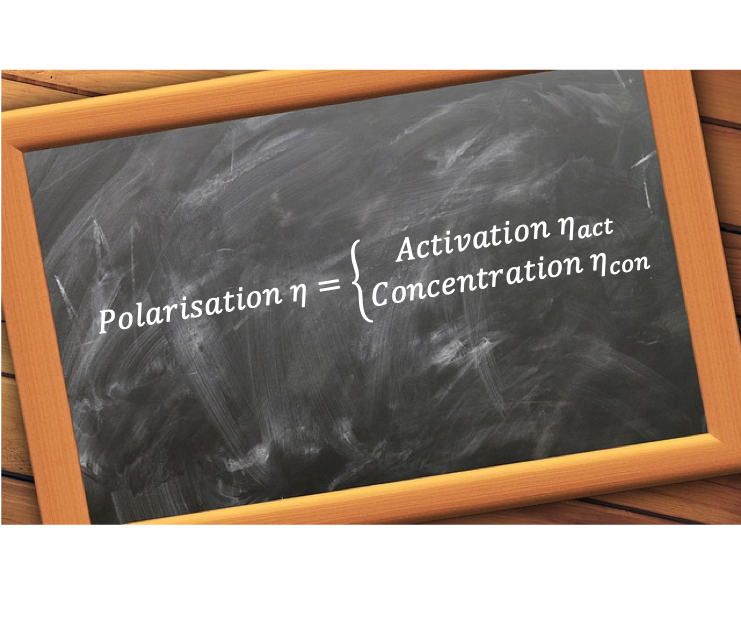Polarisation is the deviation of the electrode potential from its equilibrium value, Eeqm , when a certain level of current flows. It is composed of two components: activation (or kinetic) polarisation and concentration polarisation.

Activation polarisation is the change in electrode potential from its equilibrium value when a certain level of current flows, as a result of overcoming the activation energy of the rate-determining step in an electrochemical reaction. Concentration polarisation is the change in electrode potential from its equilibrium value when a certain level of current flows, due to inefficiencies in electrode reactions caused by sluggish mass transfer between the electrode surface and the solution. The extent of the polarisation of an electrode or an electrochemical cell is measured by a quantity called overpotential, η, where
It is difficult to directly measure the individual components of overpotential when an electrochemical cell is operating. However, by making certain assumptions, it is possible to derive formulas attributing to ηact and ηcon, and design experiments based on these assumptions to measure the two quantities.

Question
Why is IR drop not part of the overpotential equation?
Answer
Overpotential is a consequence of the reactions at an electrode while the IR drop is characteristic of the bulk solution.
